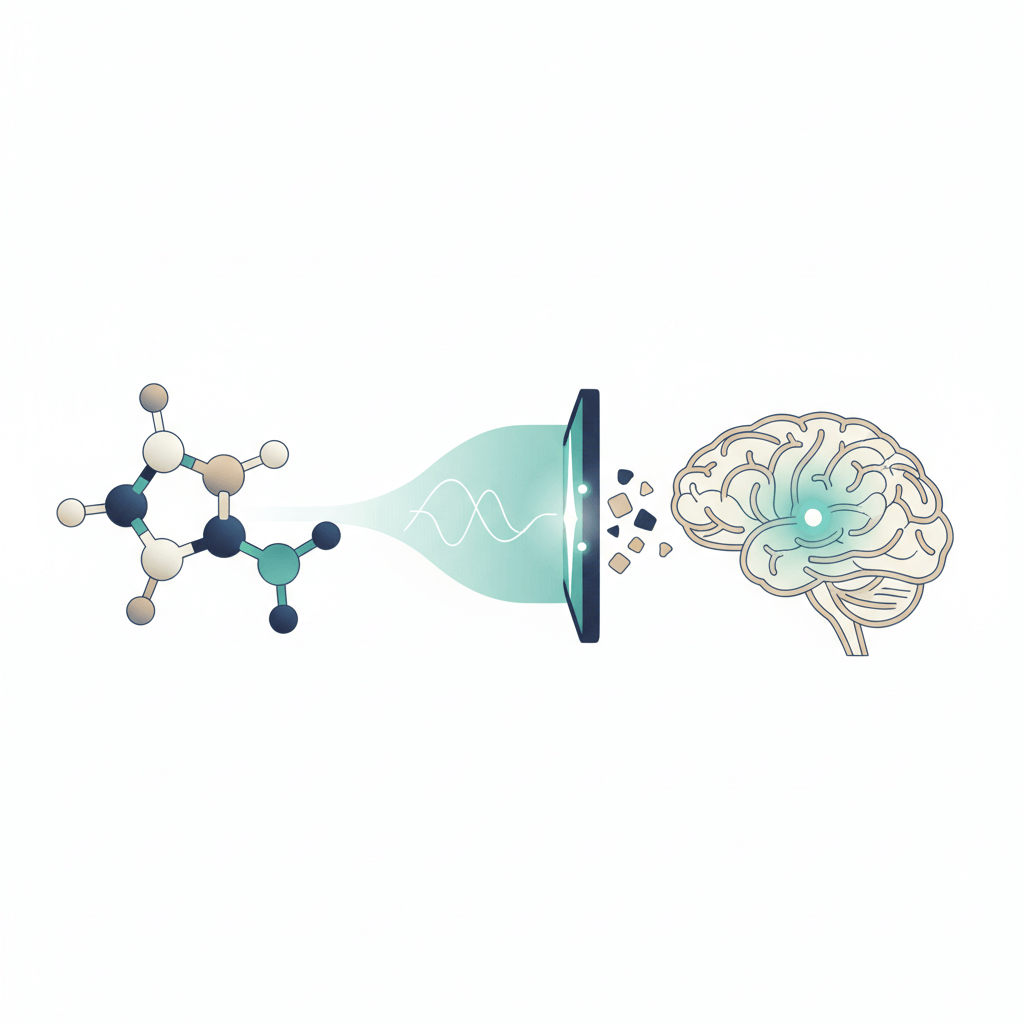Understanding Alcoholism
Alcoholism is a complex and progressive disorder that affects individuals physically, mentally, and emotionally. To gain a comprehensive understanding of how alcoholism develops over time, it is essential to explore its definition and the impact it has on the body.

Defining Alcoholism
Alcoholism, also known as alcohol use disorder (AUD), is a chronic condition characterized by the compulsive and uncontrollable consumption of alcohol. It is a disease that affects the brain, leading to an inability to control or stop drinking, despite negative consequences.
The Diagnostic and Statistical Manual of Mental Disorders (DSM-5) outlines specific criteria for diagnosing alcoholism. These criteria include factors such as an increased tolerance to alcohol, withdrawal symptoms when not drinking, unsuccessful attempts to cut down or control alcohol consumption, and continued drinking despite adverse effects on one's health, relationships, or responsibilities.
The Impact of Alcohol on the Body
Alcohol affects various systems of the body, leading to both short-term and long-term health consequences. Understanding these impacts can shed light on the development and progression of alcoholism.
Short-Term Effects
System and Short-Term Effects
Central Nervous System: Impaired judgment, coordination, and concentration; slowed reflexes
Cardiovascular System: Increased heart rate and blood pressure; irregular heart rhythm
Digestive System: Irritation of the stomach lining; increased risk of gastritis and ulcers
Liver: Inflammation, fatty liver, and potential liver damage
Kidneys: Increased urine production, leading to dehydration
Immune SystemW: eakened immune response, making individuals more susceptible to infections
Long-Term Effects
System and Long-Term Effects
Central Nervous System: Memory problems, cognitive impairments, and increased risk of neurological disorders
Cardiovascular System: Increased risk of heart disease, stroke, and high blood pressure
Digestive System: Increased risk of liver disease, such as cirrhosis
Liver: Alcoholic hepatitis, fibrosis, and cirrhosis
Pancreas: Inflammation (pancreatitis), which can impair digestion and lead to diabetes
Immune System: Increased vulnerability to infections and certain types of cancer
Reproductive System: Sexual dysfunction, infertility, and increased risk of fetal alcohol syndrome
Understanding the impact of alcohol on the body is crucial in comprehending the detrimental effects that alcoholism can have over time. By recognizing the definition of alcoholism and the physical toll it takes on the body, individuals can gain insight into the development and consequences of this disease.
Early Stages of Alcoholism
The development of alcoholism is a gradual process that often begins with social drinking and experimentation. Over time, individuals may experience an increase in tolerance and dependence, leading to the early stages of alcoholism.
Social Drinking and Experimentation
In the early stages, individuals may engage in social drinking as a way to relax, have fun, or bond with others. Social drinking is generally considered moderate and does not typically involve excessive alcohol consumption. It is important to note that not everyone who engages in social drinking will develop alcoholism.
Drinking Pattern and Description
Social Drinking: Occasional and moderate consumption of alcohol during social events or gatherings.
Experimental Drinking: Trying different types of alcoholic beverages or exploring the effects of alcohol in a controlled manner.
Increasing Tolerance and Dependence
As individuals continue to consume alcohol, their bodies may begin to develop tolerance. This means that they require larger amounts of alcohol to achieve the desired effects. Increased tolerance can lead to more frequent and higher quantity consumption of alcohol.
Stage and Description
Early Tolerance: Individuals may find that they need to drink more alcohol than before to experience the desired effects.
Dependence: Dependence occurs when the body adapts to the presence of alcohol and requires it to function normally. Withdrawal symptoms may start to appear if alcohol consumption is reduced or stopped abruptly.
It is important to recognize the signs of increasing tolerance and dependence in oneself or others. These signs may include an increased desire or need to drink alcohol, experiencing withdrawal symptoms when attempting to quit or cut down, and a reduced ability to control alcohol consumption.
Understanding the early stages of alcoholism is crucial in addressing the issue before it progresses further. Recognizing the signs and seeking help during this phase can significantly improve the chances of successful intervention and treatment.
Progression to Problem Drinking
As alcoholism develops over time, individuals may progress from social drinking to problem drinking. This section explores two key aspects of this progression: frequent binge drinking and the negative consequences and complications that can arise.
Frequent Binge Drinking
One of the signs of progression towards problem drinking is the increased frequency of binge drinking episodes. Binge drinking is defined as consuming a large amount of alcohol within a short period, typically resulting in a blood alcohol concentration (BAC) level of 0.08% or higher. This behavior can lead to a range of health and social problems.
Frequency of Binge Drinking and Definition
Moderate Binge Drinking: 4-5 episodes per month
Heavy Binge Drinking: 6 or more episodes per month
Frequent binge drinking can have serious consequences for both physical and mental health. It puts individuals at a higher risk of accidents, injuries, and alcohol poisoning. Binge drinking also increases the likelihood of engaging in risky behaviors, such as unsafe sex or driving under the influence. Over time, repeated episodes of binge drinking can contribute to the development of alcohol dependence and addiction.
Negative Consequences and Complications
Problem drinking is often accompanied by negative consequences and complications that impact various aspects of an individual's life. These consequences can include:
- Health Issues: Excessive alcohol consumption can lead to a wide range of health problems, such as liver disease, cardiovascular issues, gastrointestinal disorders, and neurological damage. Long-term alcohol abuse can have irreversible effects on the body.
- Relationship Problems: Problem drinking can strain personal relationships, leading to conflicts, broken trust, and isolation. It can also negatively impact family dynamics and contribute to domestic violence.
- Occupational and Legal Issues: Alcohol-related problems can affect one's job performance, leading to absenteeism, poor productivity, and even job loss. Problem drinking can also result in legal consequences, such as DUI (Driving Under the Influence) charges or other legal issues related to alcohol-related behavior.
- Financial Difficulties: The costs associated with alcohol consumption, such as purchasing alcohol and dealing with the consequences of problem drinking, can strain an individual's financial resources. This can lead to financial instability and debt.
It is important to recognize the signs of problem drinking and seek help if needed. Early intervention and support can significantly improve outcomes and increase the chances of successful recovery.
Alcoholism Development over Time
As alcohol consumption progresses, it can lead to the development of alcoholism over time. This section will explore two key aspects of alcoholism development: physical and psychological addiction, as well as withdrawal symptoms and cravings.
Physical and Psychological Addiction
Alcoholism is characterized by both physical and psychological addiction to alcohol. Physical addiction refers to the body's dependence on alcohol, while psychological addiction refers to the intense cravings and compulsion to consume alcohol.
Over time, frequent and heavy alcohol use can lead to changes in the brain's chemistry. The brain becomes accustomed to the presence of alcohol and relies on it to function normally. This dependence on alcohol can result in withdrawal symptoms when alcohol consumption is stopped or significantly reduced.
Withdrawal Symptoms and Cravings
When individuals with alcoholism try to quit or cut back on their alcohol intake, they often experience withdrawal symptoms. These symptoms can range from mild to severe and may include:
- Tremors
- Sweating
- Nausea and vomiting
- Anxiety
- Irritability
- Insomnia
- Headaches
Withdrawal symptoms can be distressing and may drive individuals to continue drinking alcohol to alleviate the discomfort. This reinforces the cycle of addiction and makes it challenging to break free from alcoholism.
In addition to physical withdrawal symptoms, individuals with alcoholism often experience intense cravings for alcohol. These cravings can be triggered by various cues, such as social situations, stress, or emotional distress. The overwhelming desire to consume alcohol can make it difficult to resist and can contribute to the cycle of addiction.
Understanding the development of physical and psychological addiction, as well as the experience of withdrawal symptoms and cravings, is crucial in addressing and treating alcoholism. It is important to seek professional help and support to navigate the challenges of alcoholism and work towards recovery.
Factors Influencing Alcoholism Development
Alcoholism is a complex condition that can develop over time due to various factors. Understanding these influences is crucial in comprehending the development of alcoholism. Three significant factors that contribute to the development of alcoholism are genetic predisposition, environmental and social factors, and co-occurring mental health disorders.
Genetic Predisposition
Genetics play a substantial role in the development of alcoholism. Individuals with a family history of alcoholism are at a higher risk of developing the condition themselves. Studies have shown that genetic factors contribute to about 40-60% of the risk for alcohol use disorder (AUD). Specific genes related to alcohol metabolism, neurotransmitter function, and reward pathways may influence an individual's susceptibility to alcoholism.
Furthermore, genetic factors can also impact an individual's response to alcohol. Some individuals may experience a stronger pleasurable response to alcohol, making them more prone to developing an addiction. Understanding one's genetic predisposition to alcoholism can help in early intervention and prevention strategies.
Environmental and Social Factors
Environmental and social factors have a significant impact on alcoholism development. These factors include family dynamics, peer influence, cultural norms, and availability of alcohol. Growing up in an environment where alcohol misuse is prevalent can increase the likelihood of developing an alcohol use disorder.
Social factors, such as peer pressure and social acceptance of heavy drinking, can influence an individual's drinking habits. Stressful life events, trauma, and social isolation can also contribute to the development of alcoholism. It is important to note that while environmental and social factors can increase the risk, they do not guarantee the development of alcoholism.
Co-occurring Mental Health Disorders
The presence of co-occurring mental health disorders is commonly associated with alcoholism. Many individuals with mental health conditions, such as depression, anxiety, or post-traumatic stress disorder (PTSD), turn to alcohol as a form of self-medication. Unfortunately, this can lead to a vicious cycle where alcohol exacerbates the symptoms of mental health disorders, further worsening the overall well-being.
It is estimated that approximately 30-40% of individuals with alcohol use disorder also have a co-occurring mental health disorder. Dual diagnosis treatment, addressing both alcoholism and the underlying mental health condition, is crucial for successful recovery.
Understanding the genetic, environmental, social, and mental health factors that contribute to the development of alcoholism can help in identifying at-risk individuals and implementing effective prevention and treatment strategies. By addressing these factors comprehensively, individuals struggling with alcoholism can receive the support they need to overcome this challenging condition.
Seeking Help and Treatment
When alcoholism develops over time, seeking help and treatment becomes crucial for individuals struggling with addiction. Recognizing the signs of alcoholism and understanding the available intervention and treatment options are essential steps towards recovery.
Recognizing the Signs of Alcoholism
Recognizing the signs of alcoholism is the first step towards seeking help. While the symptoms and behaviors may vary from person to person, there are common indicators that may suggest a problem with alcohol:
Signs of Alcoholism
- Increased tolerance to alcohol
- Loss of control over drinking
- Neglecting responsibilities and obligations
- Drinking alone or in secrecy
- Experiencing withdrawal symptoms when not drinking
- Continued drinking despite negative consequences
- Failed attempts to cut down or quit drinking
If you or someone you know exhibits these signs, it is important to seek professional help. A healthcare provider or addiction specialist can assess the severity of the alcohol use disorder and recommend appropriate treatment options.
Intervention and Treatment Options
Interventions can be effective in helping individuals with alcoholism recognize the impact of their condition and encourage them to seek treatment. Family members, friends, or healthcare professionals can facilitate the intervention process, providing support and guidance.
Once the decision to seek treatment has been made, there are various options available:
- Detoxification (Detox): For individuals with severe alcohol dependence, a medically supervised detoxification process may be necessary. During detox, the body is rid of alcohol while managing withdrawal symptoms in a safe and controlled environment.
- Inpatient Rehabilitation: Inpatient rehabilitation programs provide structured and intensive treatment for alcoholism. These programs often involve a combination of therapy, counseling, and support groups. The duration of inpatient treatment can vary depending on the individual's needs and progress.
- Outpatient Programs: Outpatient programs offer flexibility for individuals who do not require 24/7 supervision. These programs provide counseling, therapy, and support group sessions while allowing individuals to continue their daily routines. Outpatient treatment can be an effective option for those with milder forms of alcoholism or as a step-down after completing inpatient treatment.
- Support Groups: Support groups, such as Alcoholics Anonymous (AA), provide a supportive community of individuals facing similar challenges. These groups offer a platform for sharing experiences, receiving support, and learning coping strategies. Attendance at support group meetings can be an integral part of ongoing recovery.
- Therapy and Counseling: Individual therapy and counseling play a crucial role in alcoholism treatment. Cognitive-behavioral therapy (CBT), motivational interviewing, and family therapy are commonly used approaches. Therapy helps individuals understand the underlying causes of their alcoholism, develop healthier coping mechanisms, and address any co-occurring mental health disorders.
Treatment plans should be tailored to each individual's specific needs and circumstances. It is important to consult with healthcare professionals or addiction specialists to determine the most appropriate treatment approach for alcoholism.
Remember, seeking help and treatment is a brave and important step towards overcoming alcoholism. With the right support and resources, recovery is possible.
Sources
The Cycle of Alcohol Addiction













